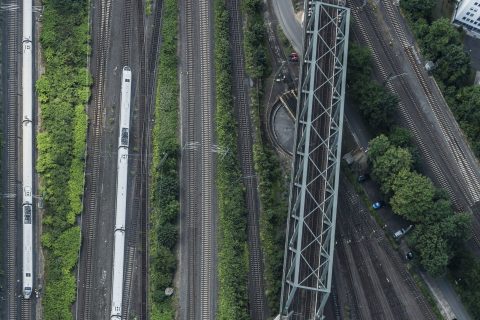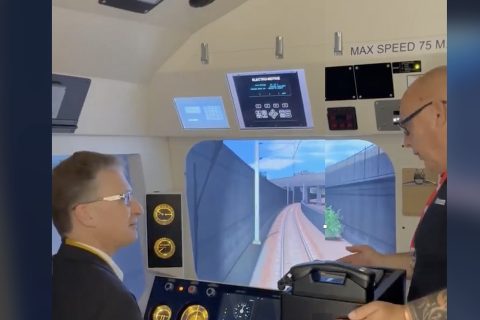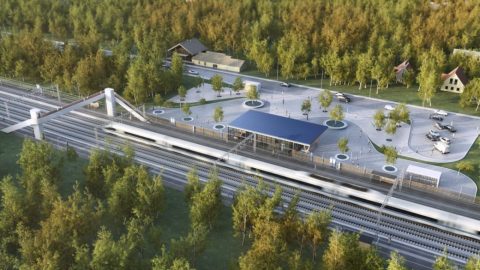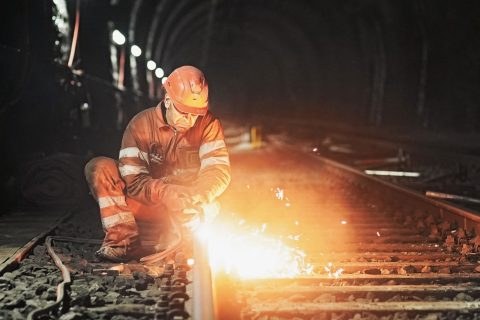Voici les nominés des RailTech Innovation Awards 2024
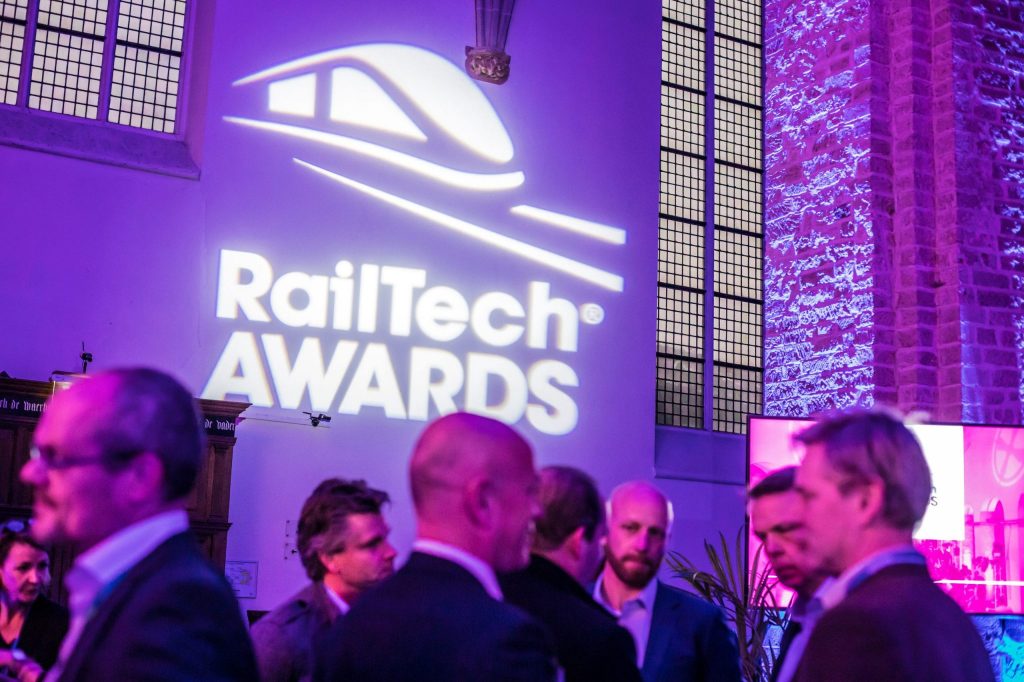
It is with great pleasure that RailTech announces the 9 nominated companies for the RailTech Innovation Awards 2024 in the Digitalization, Technology & Design and Infrastructure categories. At RailTech Europe on March 6 in Utrecht, the Netherlands, the three winners and the People’s Choice Award will be recognized.
Pour chaque catégorie, trois innovations sont nominées pour le prix. Lors de RailTech Europe le 6 mars, la cérémonie de remise des prix de l’innovation aura lieu à 16 heures dans l’espace restauration, où les lauréats seront annoncés. Un jury composé d’Enno Wiebe, directeur technique du CER, de Juliette van Driel, chef de produit Systèmes de surveillance des trains en bordure de voie et Surveillance des actifs en temps réel chez ProRail, et de l’équipe éditoriale de RailTech a établi la liste des candidats retenus pour les prix de l’innovation.
Un prix supplémentaire est décerné par le public, alors votez pour votre innovation préférée ici !
Numérisation
Dans la catégorie Digitalisation, les entreprises CFL multimodal, Siemens Mobility et Cylus sont nominées.
La solution CFL Lock-e améliore le contrôle du chargement des semi-remorques sur le rail en associant des modules lumineux avancés visibles par l’opérateur, et des dispositifs IoT pour l’enregistrement des données et la communication. Elle est développée par CFL Multimodal, l’entité Fret du groupe CFL basé au Luxembourg. Dans le cadre de la conception, le système a intégré des caractéristiques innovantes spéciales pour l’utilisateur du wagon : gestion et récolte de l’énergie, composants robustes et spécifiquement placés, installation simple pour l’exécution en cours d’exploitation et un faible effet sur la maintenance globale du wagon. Dans le cadre de la gestion de l’énergie, le système intègre des capacités permettant de désactiver les lumières lorsque le train part ou d’ajuster l’intensité en fonction de la luminosité du jour. Cet ajustement s’est avéré crucial avec la commande à distance des grues récemment installée à Bettembourg-Dudelange. Une fonction unique de « géofencing inversé » a été développée pour permettre aux terminaux d’optimiser leurs propres opérations à l’aide des données de CFL Lock-e. Les points forts du système sont le soutien aux personnes chargées du contrôle en leur fournissant des informations immédiates sans intervention manuelle, et le partage d’informations entre les différents acteurs de la chaîne ferroviaire.
Controlguide TrackOps Depot, développé par Siemens Mobility, est une solution de dépôt mobile intégrée au système de contrôle Controlguide Iltis N, qui permet de contrôler les itinéraires et les points de manœuvre afin d’effectuer des travaux de maintenance mineurs et non critiques pour la sécurité. Elle permet la mise en œuvre coopérative des processus de manœuvre, fournit une vue d’ensemble des opérations et rationalise les procédures de communication. La solution offre une autonomie au personnel sur place et simplifie/réduit la communication avec le centre de contrôle des opérations.
Cylus offers a cybersecurity solution that mitigates risks and ensures compliance amid growing cyber threats. The CylusOne cybersecurity platform is completely non-intrusive and vendor agnostic, enabling rail operators to actively monitor and mitigate cybersecurity risks across their networks. CylusOne provides comprehensive visibility, vulnerability and risk management, and threat detection and response capabilities for various rail operational networks. Cylus was the first cybersecurity solution designed exclusively for rail operators to protect rolling stock infrastructure and systems.
Technology and design
The companies MEMSYS, Knick Elektronische Messgeräte and Infrabel are nominated in the Technology and Design category.
MEMSYS , a start-up based in Delft, Netherlands, is developing an on-board sensor system, LinQ , which provides real-time knowledge of the technical condition of railway wagons and helps fleet managers to be more effective in asset management and maintenance planning. The system consists of hardware and software that have been designed using the latest technologies. It brings together two key technologies from the latest university research: 1) a kinetic energy harvesting system to power wireless sensors on freight cars without having to worry about replacing batteries and 2) algorithms for machine learning to automatically analyze complex vibration patterns and extract actionable insights. The main use case will be the automatic detection of wheel defects, particularly wheel flats, at an early stage, giving the fleet manager plenty of time to schedule maintenance in advance and thus avoid unplanned downtime. Over the past year, the start-up has developed a first prototype and is currently piloting 10 units with a partner in Germany. During the year, pilot projects will be launched in the Netherlands with several players in the rail sector.
The innovative P16800 speed signal doubler developed by Knick Elektronische Messgeräte saves sensors, recertifications, effort and costs. In rolling stock, the number of systems that depend on accurate speed information is increasing. Often, train control systems or passenger information systems need to be modernized. However, the implementation of multiplied speed signals has so far required the installation of additional speed sensors, for which there is often no space on the train axles. The P16800 functionally safe speed signal doubler solves this problem. The P16800 extracts signals from existing measurement circuits and transmits them in identical, electrically isolated and safely decoupled form to other control systems. P16800 is predestined for safety control systems for wheel slip protection, braking system, traction, doors, driver assistance system, black box, assisted operation control system by computer in public transport and the passenger information system.
Infrabel has developed the railway safety system known as Mobile Balise System (MBS) in collaboration with Alstom, ZÖLLNER Signal. The first wave of MBS devices is expected to be delivered to the field starting in April 2024. The technology is also expected to be universally applicable to all types of trains by the end of 2025, and not only works for all types of trains. ETCS, but also for the Belgian national TBL1+ system. The MBS functions as a mobile device embedded in the tracks, serving as a protective shield for construction areas. Its particularity is to trigger emergency braking when a train passes over it, which should help raise safety standards in railway operations. MBS beacons can also be controlled remotely by radio link, for activation and deactivation. The location of these markers at a certain distance from the work zone is adapted to the braking distance of the trains. In addition, the beacon is placed via a unique click & go system, which avoids bolting the beacon between the rails, and which was designed and tested by Infrabel engineers.
Infrastructure
In the Infrastructure category, the companies Sercel, KONUX and Rhomberg Sersa / Vossloh are nominated.
The geotechnical solution developed by Sercel aims to detect and anticipate the presence of sinkholes under railway tracks. Their innovative method of seismic monitoring uses the fiber optic network for telecommunications that extends along the tracks, which, together with distributed acoustic sensing, can be used as a seismic sensor. Combined with an innovative geophysical method, the solution uses surface waves generated by trains and recorded on a network of seismic sensors to obtain an image of the nearby surface. It enables permanent, continuous, near-real-time measurement of seismic attributes, such as near-surface S-wave velocity, which is directly linked to soil consolidation or liquefaction.
The Switch predictive maintenance system developed by KONUX aims to transform the way railway companies work with the help of data and AI. KONUX Switch is an end-to-end predictive maintenance system for railway switches. It uses IIoT devices and artificial intelligence to improve network capacity, extend asset life and reduce costs. It continuously monitors and analyzes the health of key turnout components, such as the track bed and crossing frog, as well as the switch machine, and provides actionable recommendations. Continuous monitoring helps improve statistical significance and trend detection with approximately 100 measurements per day/switch. Artificial intelligence algorithms are continuously improving the accuracy of diagnostics and predictions, with an average success rate of 90%. It is a self-contained, durable system – hardware installation takes 10 minutes, it requires virtually no maintenance, and its battery lasts over 2 years.
MR.pro , the innovative cloud for railway infrastructure, was developed by Rhomberg Sersa and Vossloh . Accurately documenting the condition of railway track systems is time-consuming and highly fragmented across different sources. Today, data is often collected digitally by different people and different systems, but is not summarized in a structured way. The innovative “cloud” version of MR.pro goes even further. The web-based program facilitates access to infrastructure data across all platforms, regardless of time and location, and allows changes to be made to the database in real time. This innovative software allows railway infrastructure operators to more easily record and analyze the state of infrastructure, in accordance with regulations. The next step is to schedule maintenance and launch it directly if necessary. Another highlight is the integrated map display, also available in a mobile app, in which weak points or maintenance needs in the network are displayed visually and simply using a fault classification system. Infrastructure operators can thus immediately see the remaining useful life and the condition of the substance. In this context, MR.pro provides the necessary recommendations for maintenance based on an integrated expert system.
Participate in the awards ceremony
The jury will choose the winners based on the following criteria:
- The product or service must be new and innovative
- It must solve a relevant problem or challenge
- be applicable and constitute an improvement for the railway industry.
Join RailTech Europe and the awards ceremony at 4:00 p.m. on March 6 in Utrecht, an event with food, drinks and plenty of networking opportunities. Register for free here .

